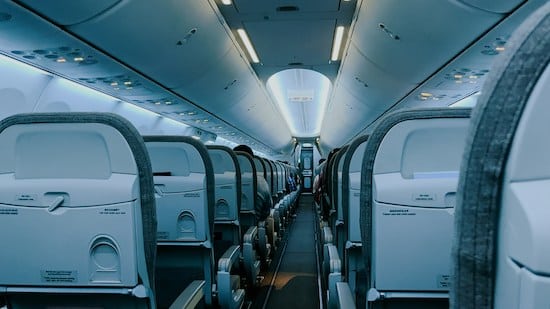How to choose the best seat on a plane: When booking a flight, most travelers focus on price or schedule—but where you sit on the plane can have a major impact on your overall travel experience. Even in economy class, choosing the best airplane seat can make your journey smoother, more comfortable, and even a little safer.
At Ibis Connect, we’re here to help you travel smarter. In this guide, we’ll break down how to choose the best economy seat on a plane, whether you’re looking for extra legroom, less turbulence, or a quick exit after landing.
Why Your Seat Choice Matters
Not all economy seats are created equal. Your perfect spot will depend on your priorities:
- Tall travelers need more legroom.
- Families prefer spacious, accessible areas.
- Business travelers want to exit the plane quickly.
- Nervous flyers seek less turbulence and safer zones.
- Leisure travelers may just want a window view to enjoy the skies.
Understanding the airplane seating layout can help you make the best choice before check-in.
What Do Airplane Seating Maps Show?
When you book your flight with Ibis Connect, you’ll see a seating map that outlines the aircraft’s layout. These maps allow you to:
- View available and reserved seats
- Identify economy, business, and first-class sections
- Spot window and aisle seats
- Locate bathrooms and emergency exits
Many airlines also indicate which seats require extra fees or offer additional legroom. Knowing how to read a seating chart can help you quickly lock in the ideal spot.
The Best Economy Seats on a Plane (And Why)
1. Safest Seats on a Plane
While flying is statistically the safest mode of long-distance travel, some travelers find comfort in choosing the safest seat possible.
Studies suggest that seats at the rear of the aircraft, especially middle seats, may offer slightly higher survival rates in rare emergencies. These spots are often better protected and located closer to structural supports.
To stay safe on board:
- Choose a seat near the emergency exits
- Wear comfortable clothing and flat shoes
- Always pay attention to the safety briefing
2. Best Seats to Avoid Turbulence
Turbulence is common, especially when flying over mountains, oceans, or during stormy weather. While it’s usually harmless, some seats experience it less than others.
For the smoothest ride, sit over the wings, where the aircraft’s center of gravity provides more stability. Avoid the front or back of the plane if you’re a nervous flyer, as these areas tend to bounce more during turbulence.
3. Best Seats for Legroom
Need more space to stretch your legs? Go for:
- Exit row seats
- Bulkhead seats (first row of the cabin)
- Premium economy upgrades, if available
Be aware that bulkhead seats may not allow under-seat storage and sometimes have fixed armrests.
4. Best Seats for Quick Exit
If you want to get off the plane fast—ideal for business travelers or tight layovers—choose a seat:
- Near the front of the cabin
- On the left side, since most planes deboard from the left
Aisle seats in the front rows are typically best for a speedy exit.
5. Best Window Seats for Views
Love taking pictures from the sky? Aim for:
- Window seats near the wings for a balanced view of the engine and clouds
- Front or rear windows for panoramic scenery
Avoid seats near the wing if you want unobstructed photos.
Final Tips for Choosing the Best Seat
Here are a few quick seat selection tips before booking your next flight with Ibis Connect:
- Use seat review websites like SeatGuru to see traveler feedback
- Book early for the best selection
- Consider paying a little more for premium seats with better location or comfort
Fly Smarter with Ibis Connect
At Ibis Connect, we’re committed to helping you travel better—from scoring great flight deals to choosing the best seat on the plane. Whether you’re flying for business or leisure, these seating strategies will help you enjoy a more comfortable and personalized journey.
Ready to book your next trip? Visit Ibis Connect to explore how to choose the best seat on a plane.
